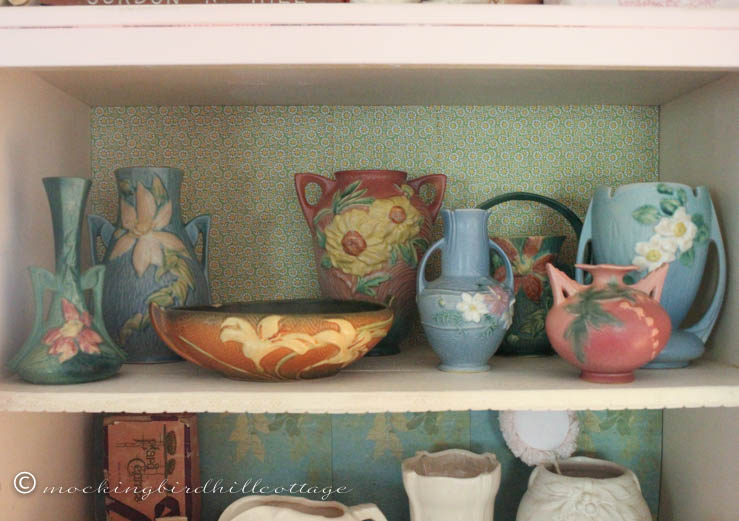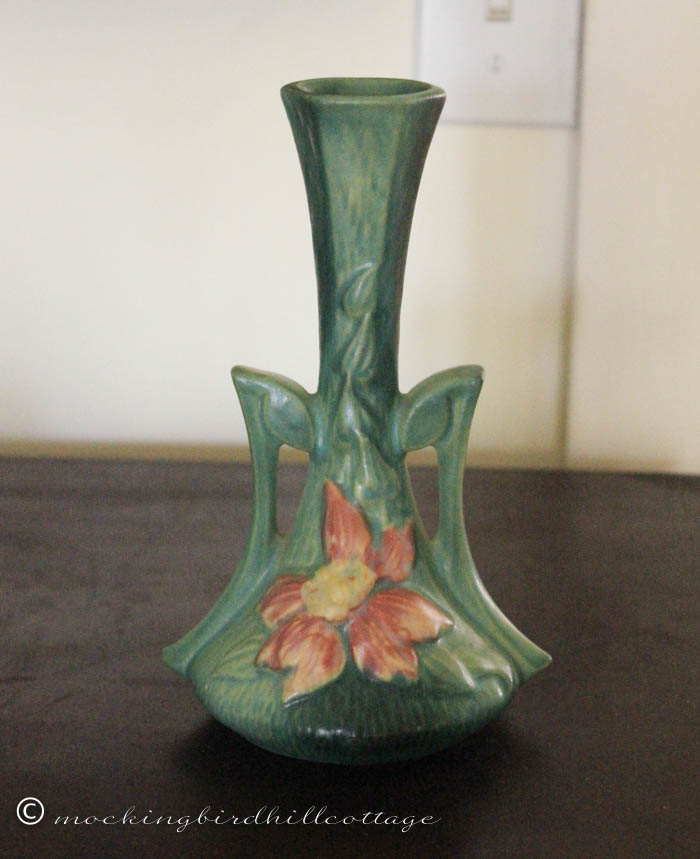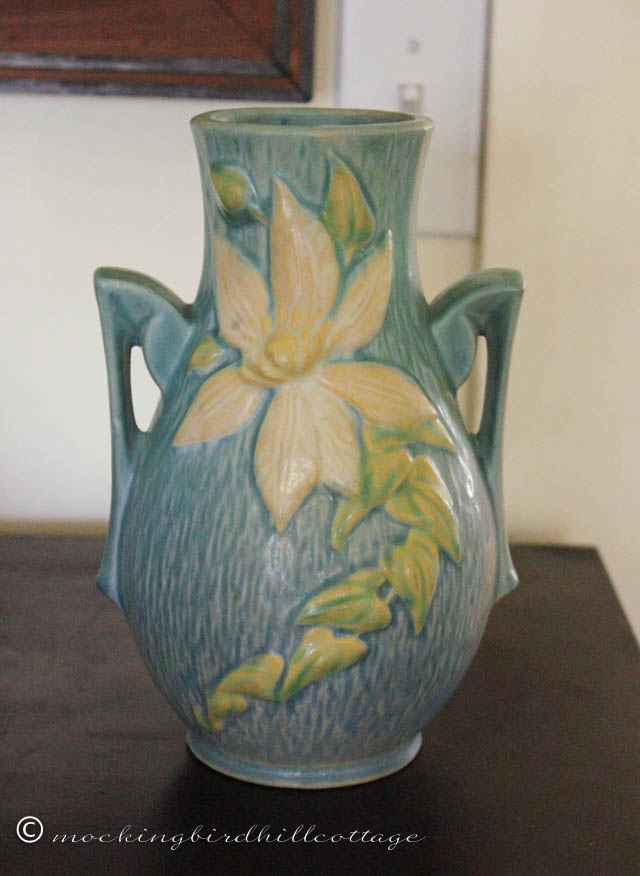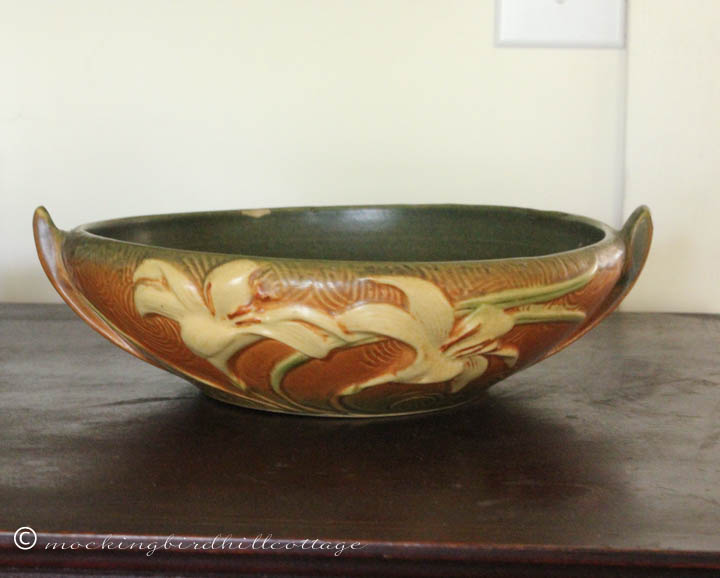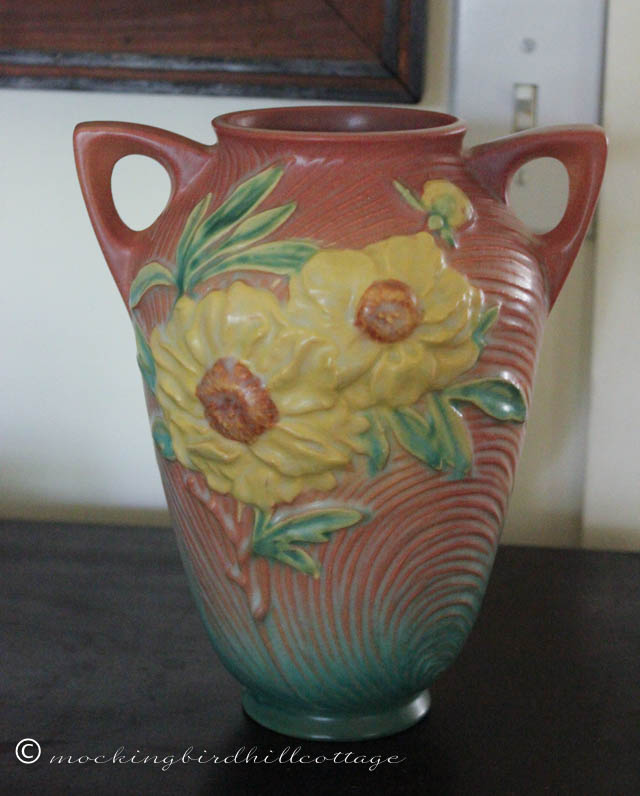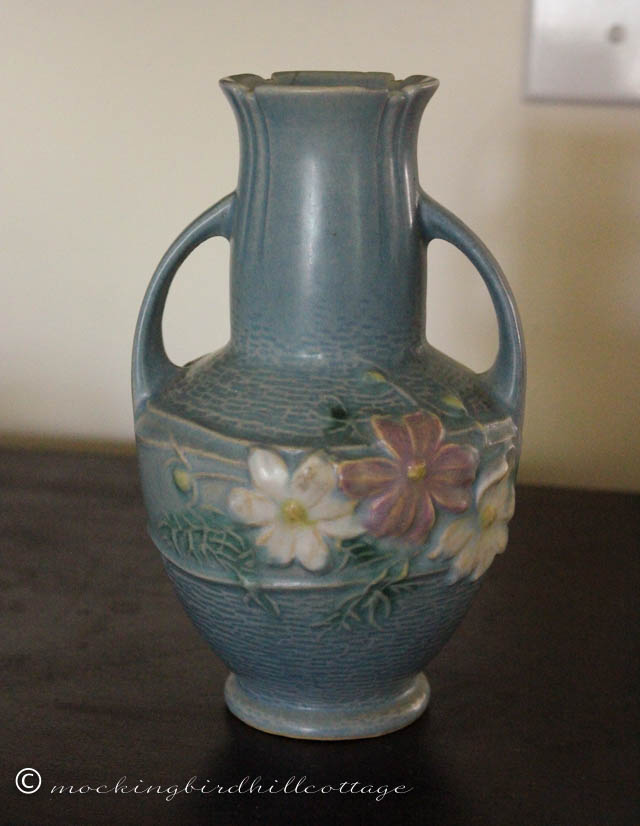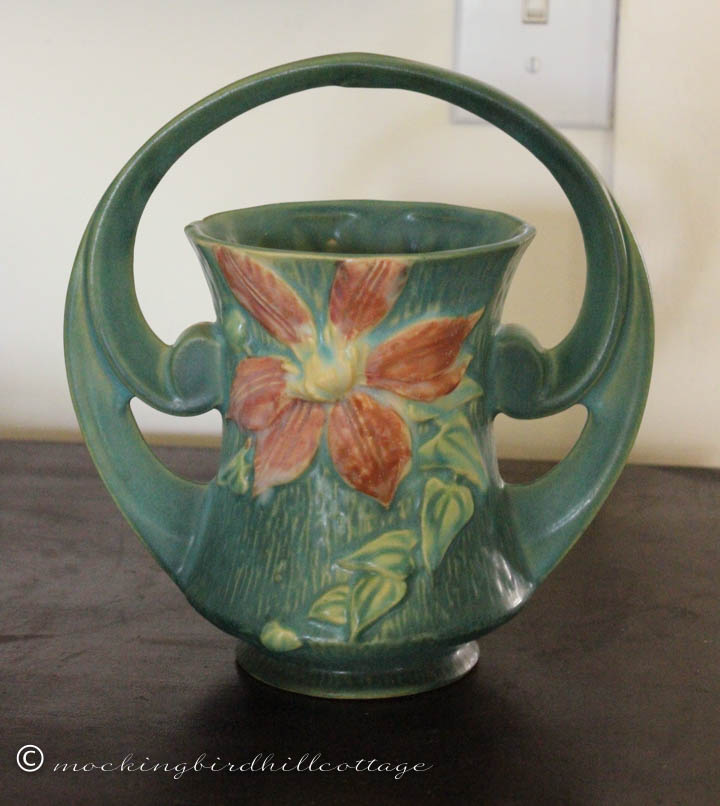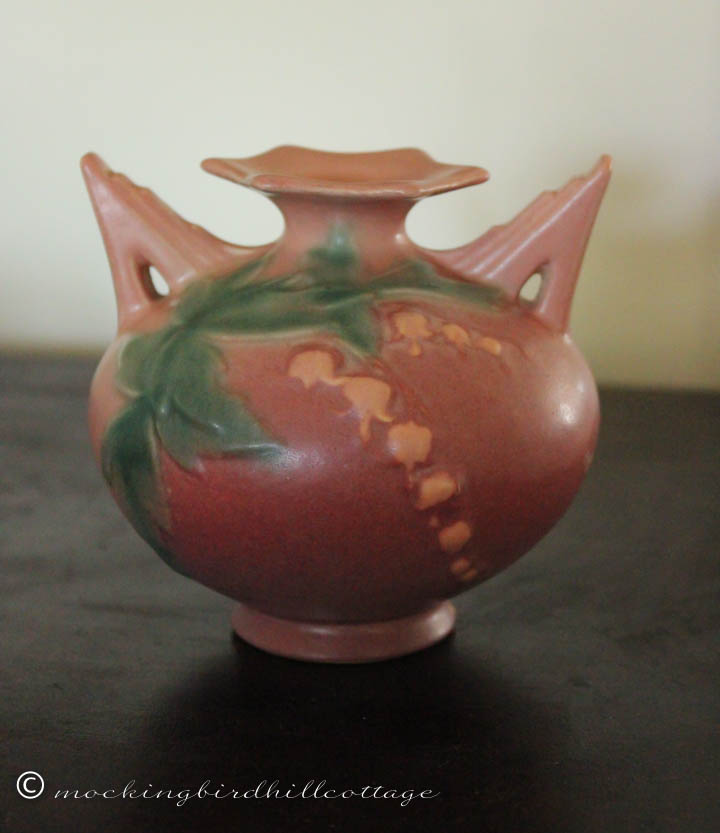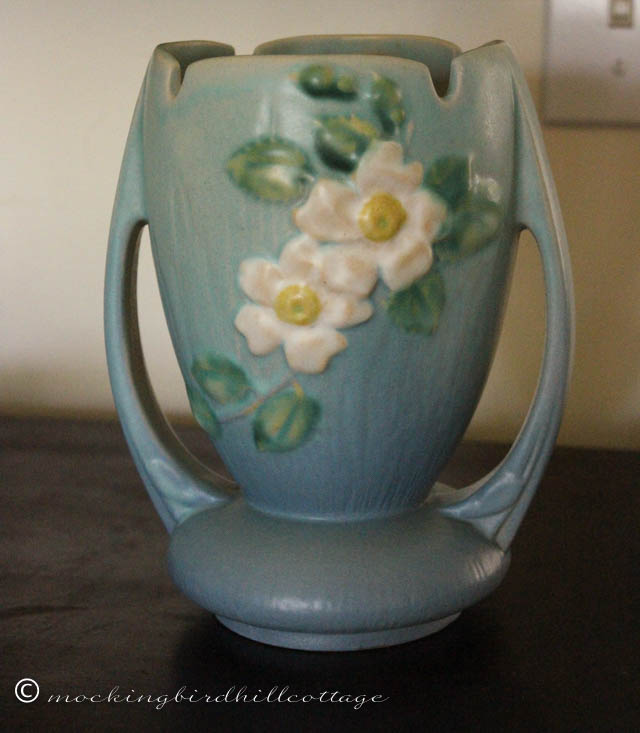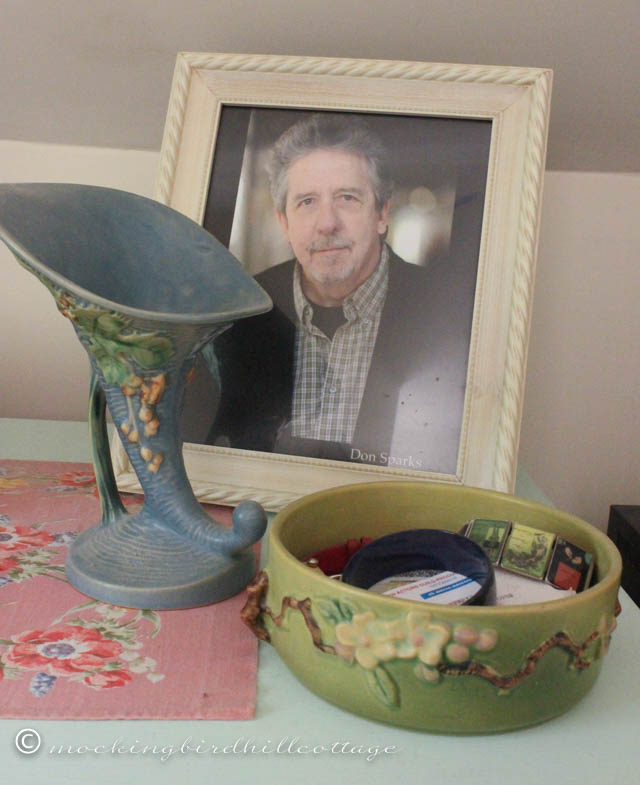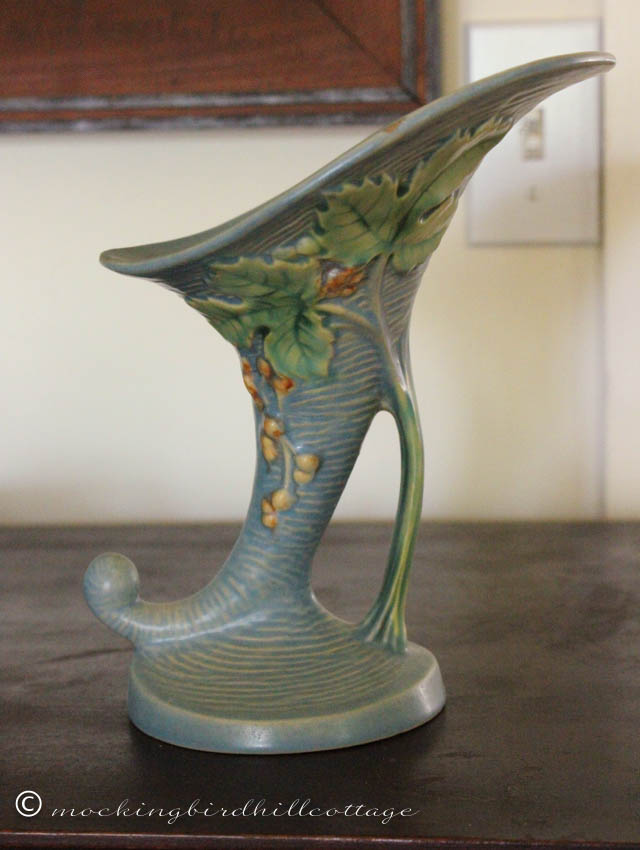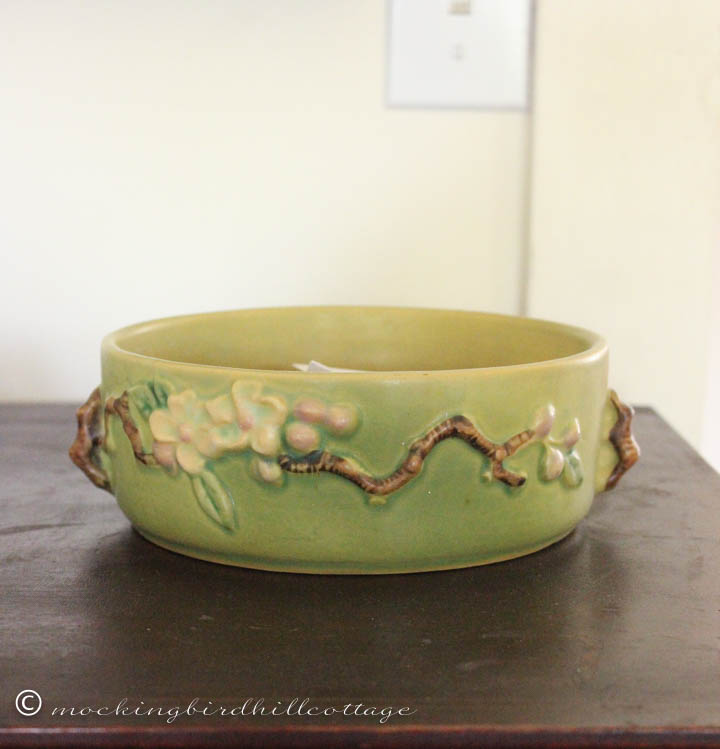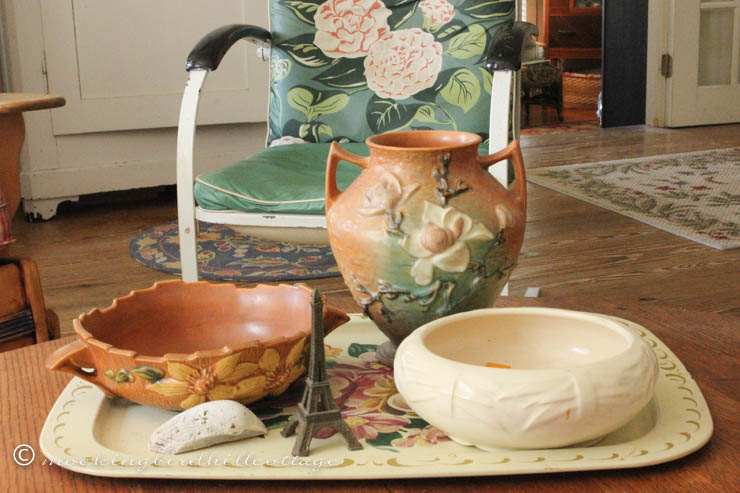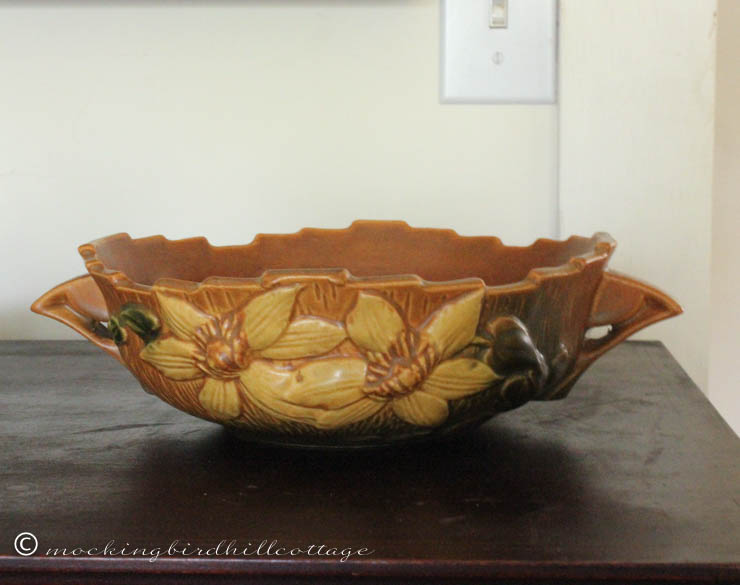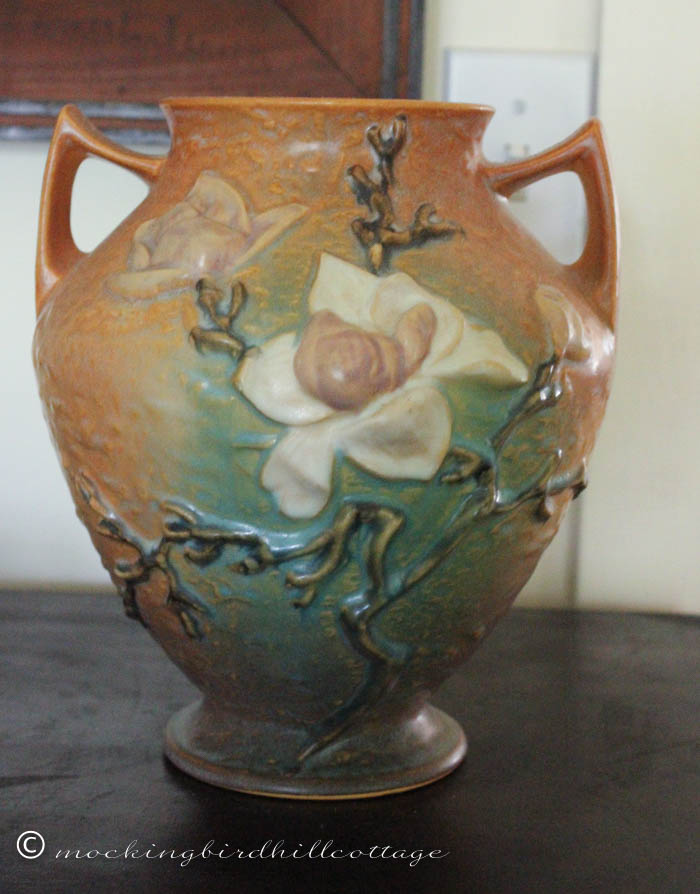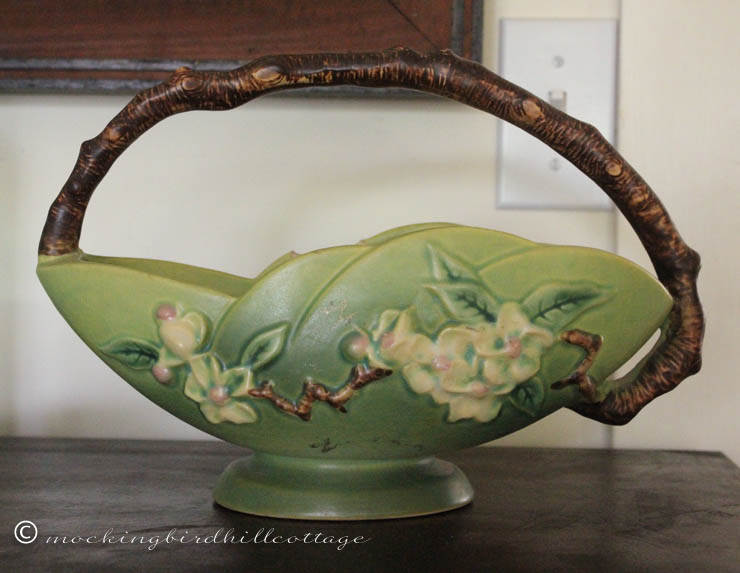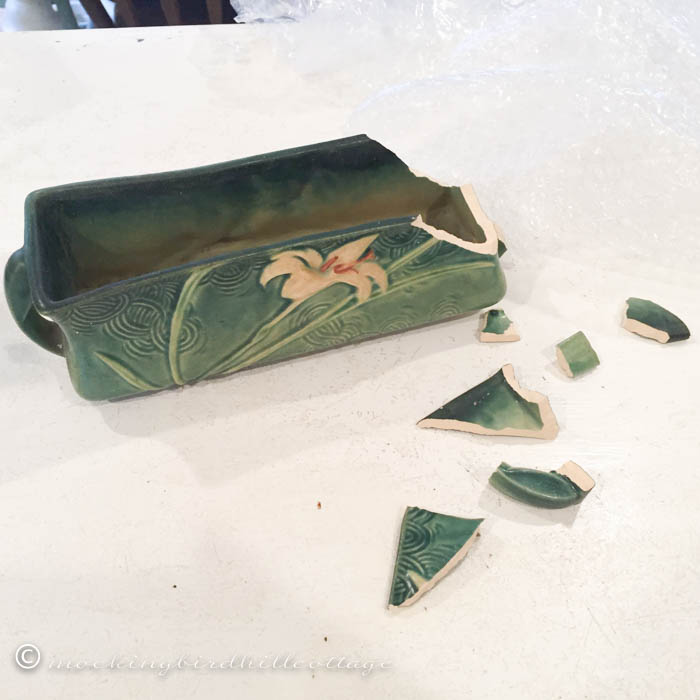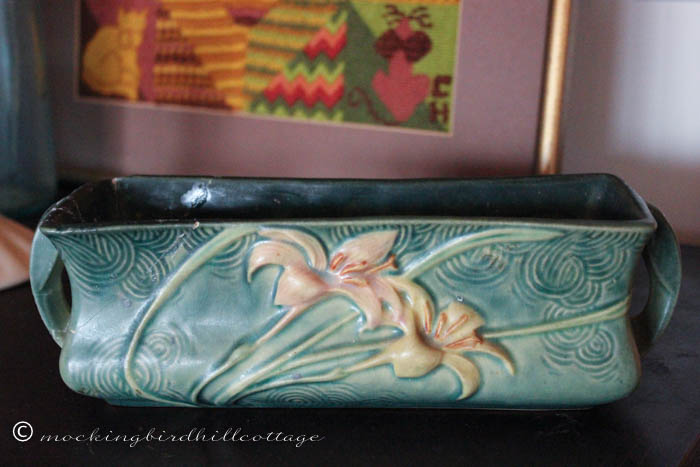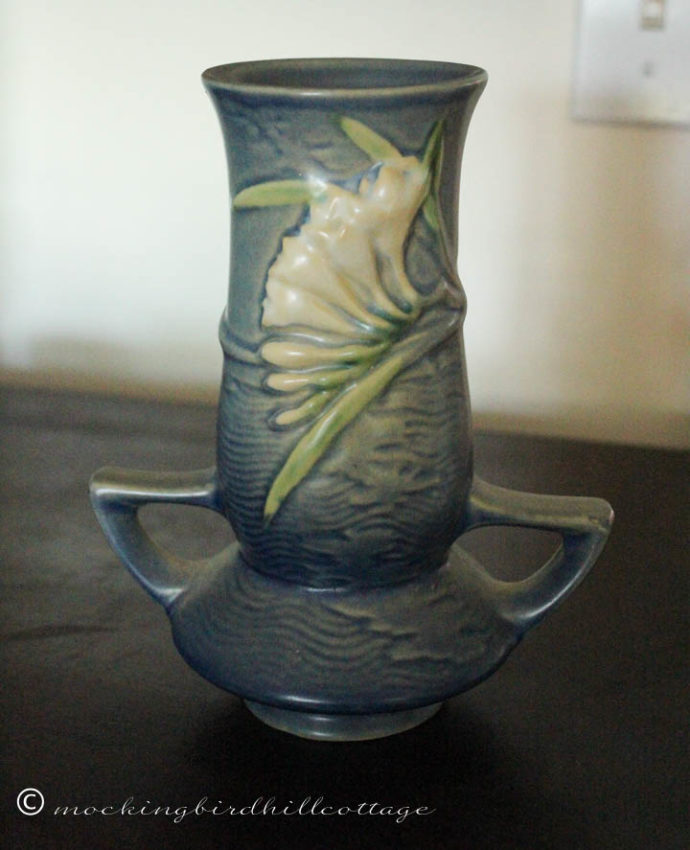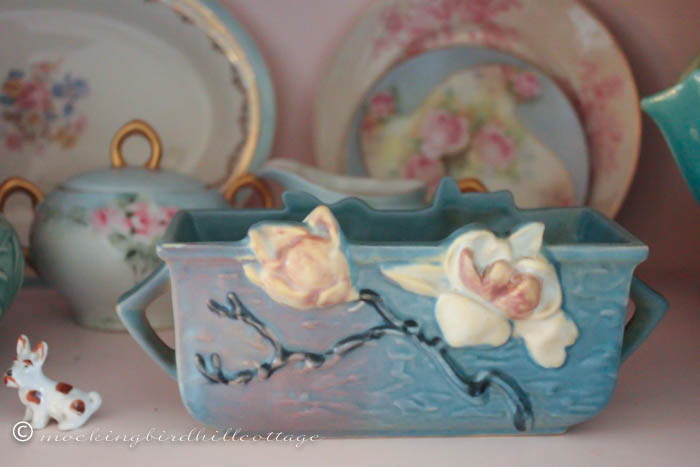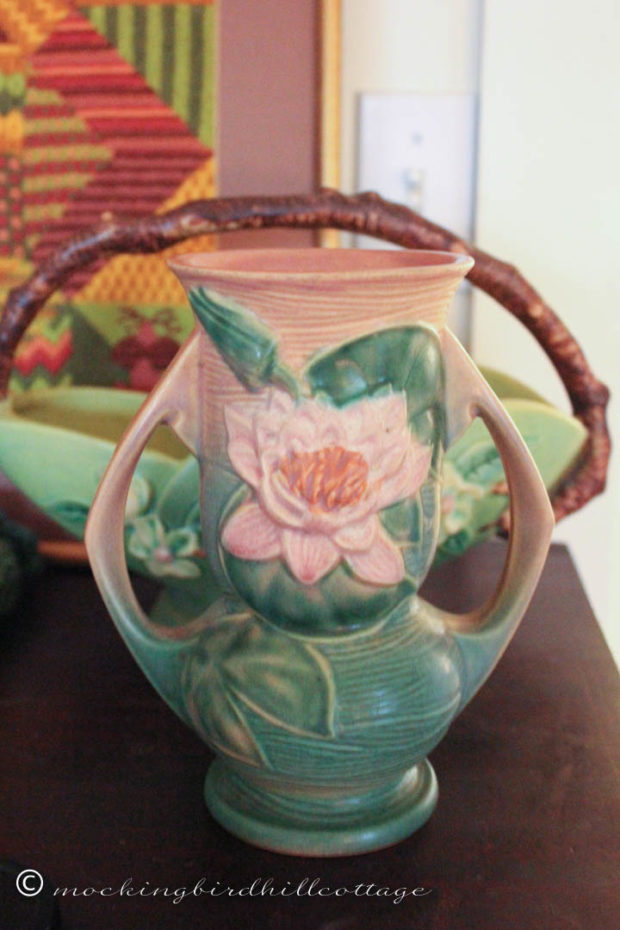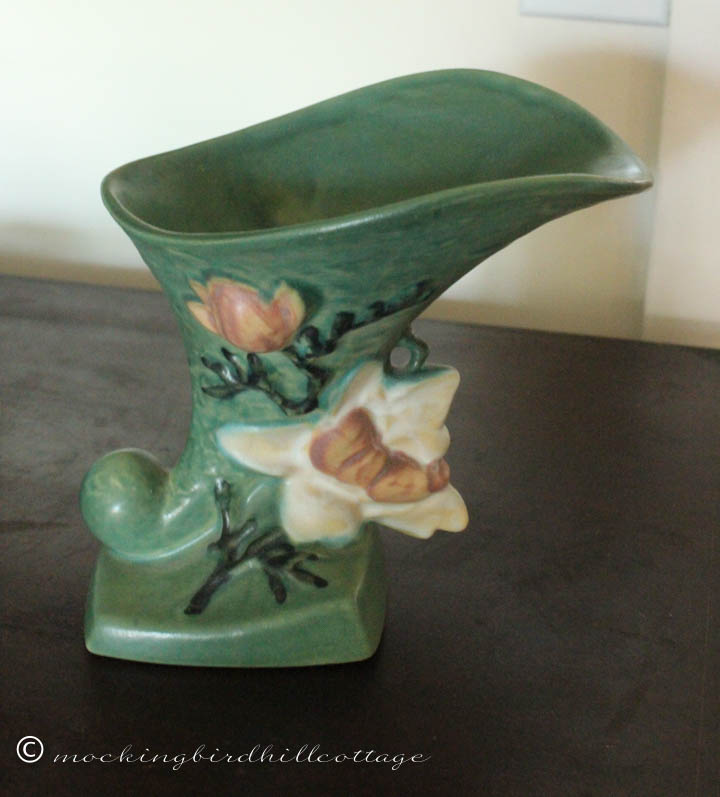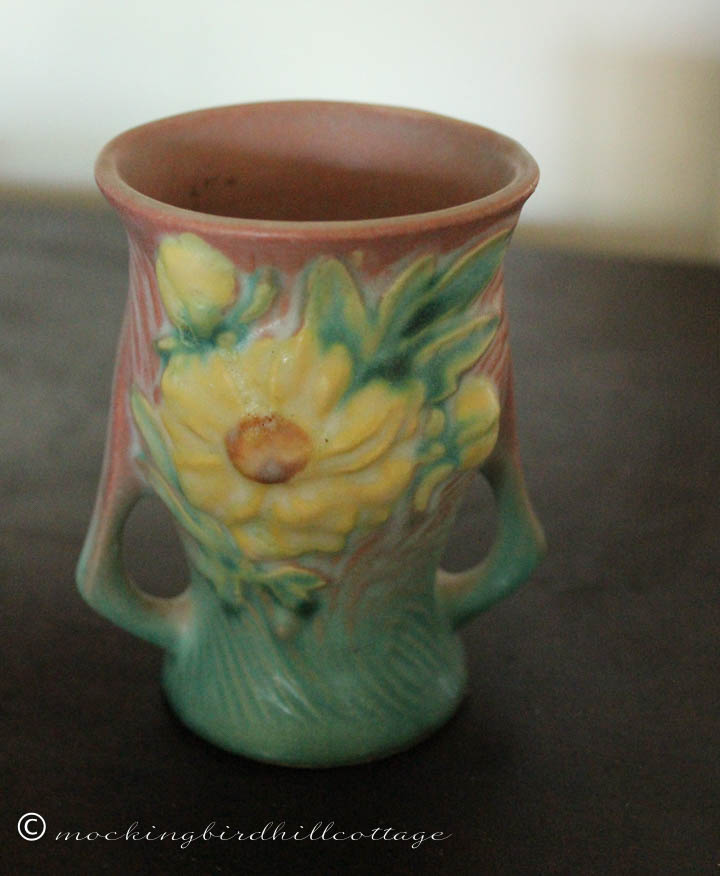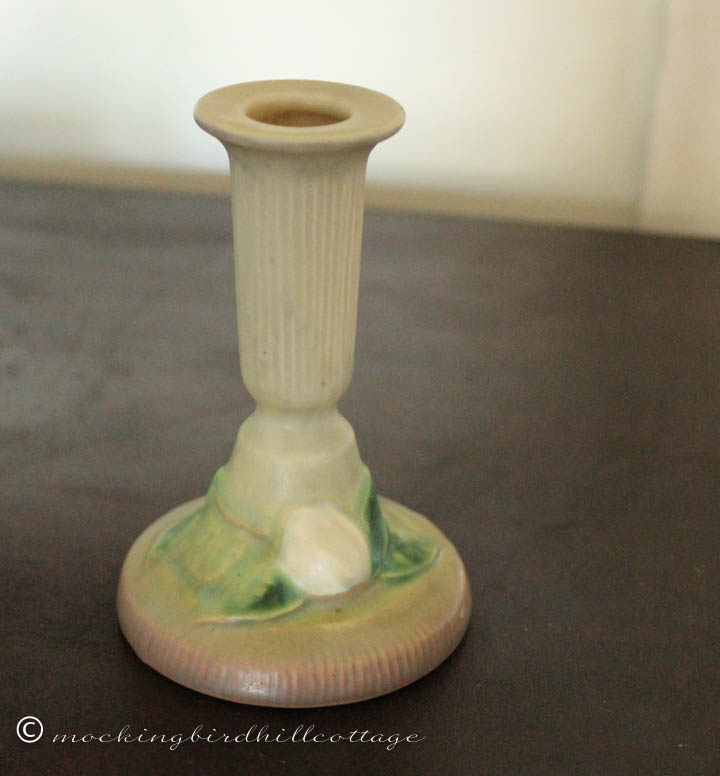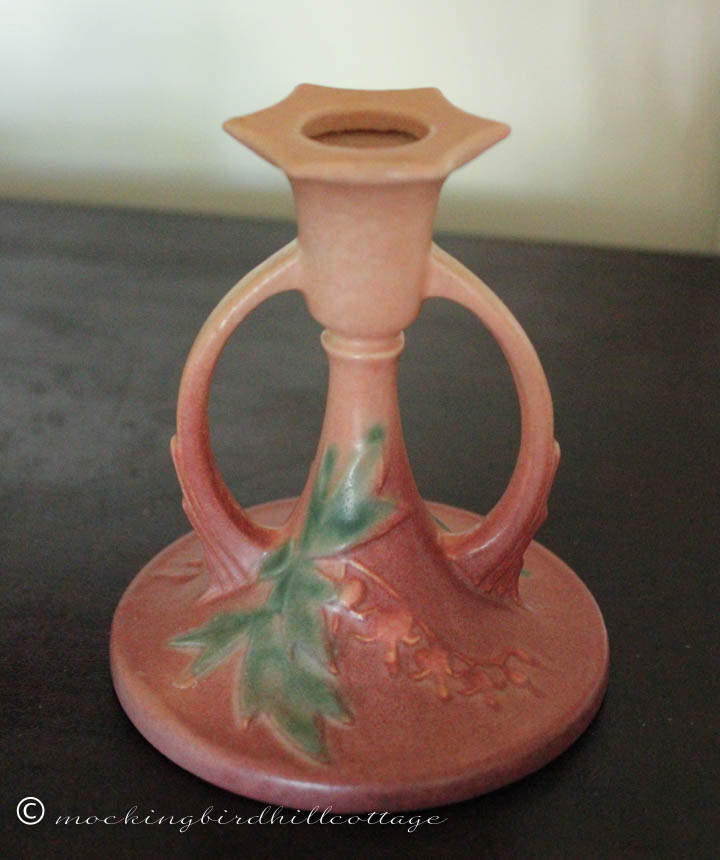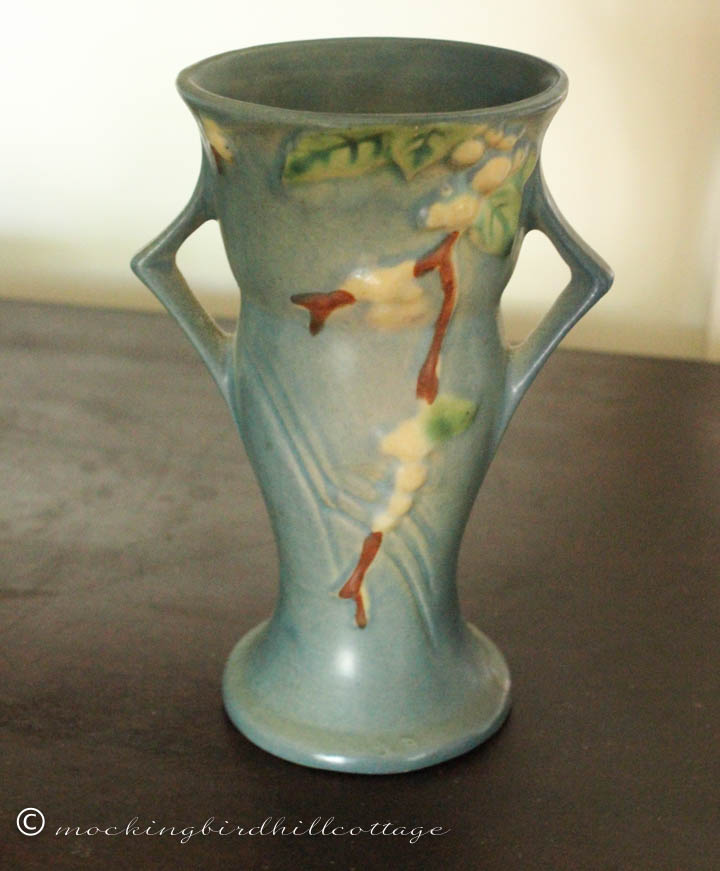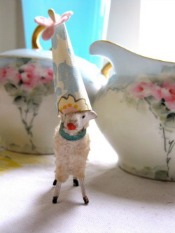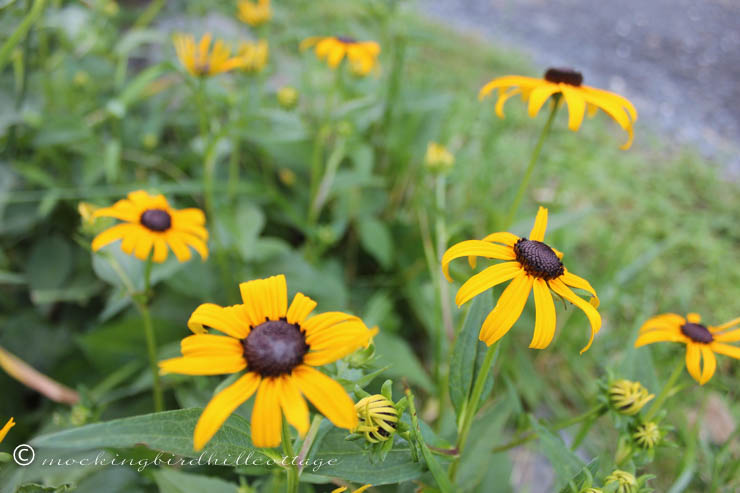
The heat continues here in the Northeast (and not only here). I go outside to water the plants about three times a day, then it’s back to the A/C. I end up feeling restless.
I want to share some Roseville Pottery resources and information that will be helpful if you’re considering buying a piece or two. There are sources online that will explain marks and the history of Roseville Pottery. A simple Google search will bring them up.
Reference Books
You know me. I like to research and learn as much as I can about the things I love to collect. So I have books about egg cups, McCoy Pottery, Bakelite and Roseville Pottery. Here are three of the books I consult:
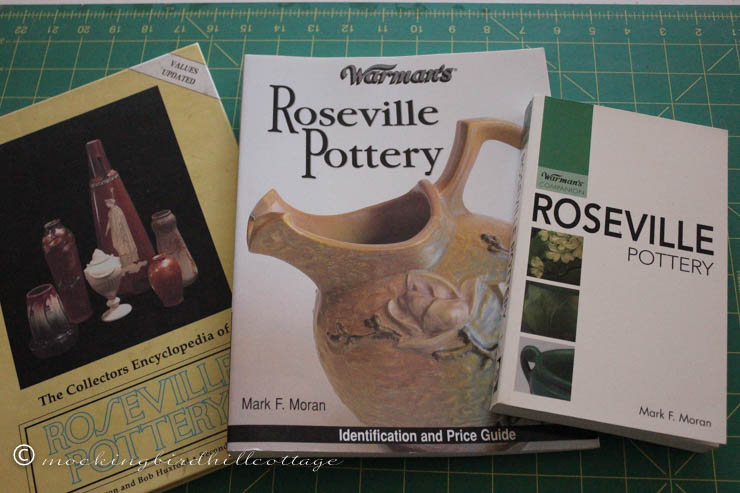
The Collectors Encyclopedia of Roseville Pottery
Warman’s Roseville Pottery
Warman’s Companion: Roseville Pottery (this is essentially the same as the larger book, but it’s portable.)
I’ve had these for several years and I don’t know if they’ve been updated recently. (Check Amazon.) If they haven’t, the price range you see will not be accurate. And frankly, nothing that wasn’t written in 2016 will be accurate. What these do have are lots of color photos of the various patterns and helpful information as to when they were manufactured and what marks were used.
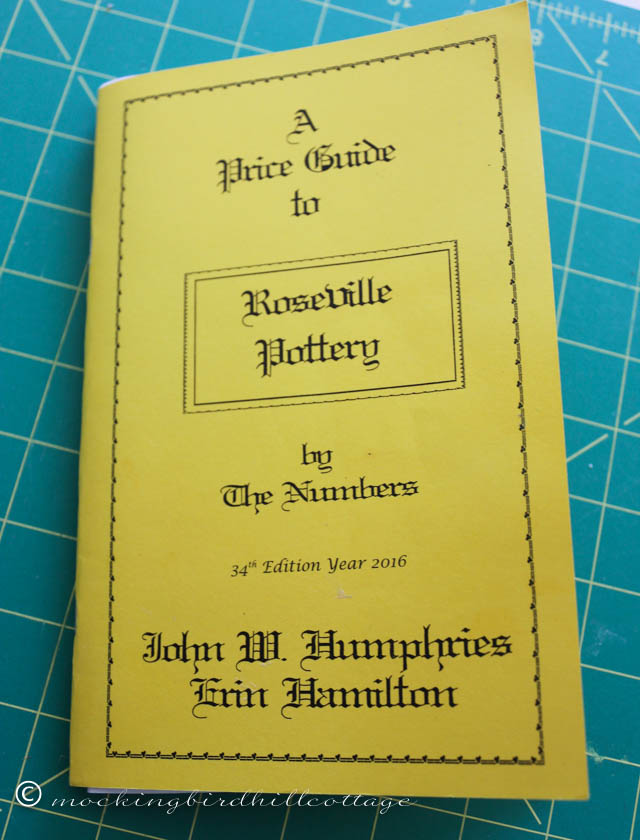
I found this handy book last year – you can get it on Amazon and eBay. This is updated every year, so it’s a valuable reference for current prices. It’s simply what it says; a list, by pattern and number, of the price range for each piece of Roseville. This now lives right by my chair in the den. I consult it all the time. Priced at $9.95. Totally worth it.
This booklet, in combination with my picture books, is all I need.
Marks
There’s not a lot of consistency as to marks. Some of the earlier pieces had foil stickers and no incised marks. Eventually they began to be marked “Roseville” with the pattern number below. In 1940, many of the pieces began to be marked: Roseville, U.S.A., with the corresponding number for that piece. These marks tend to be raised. Here are some examples:
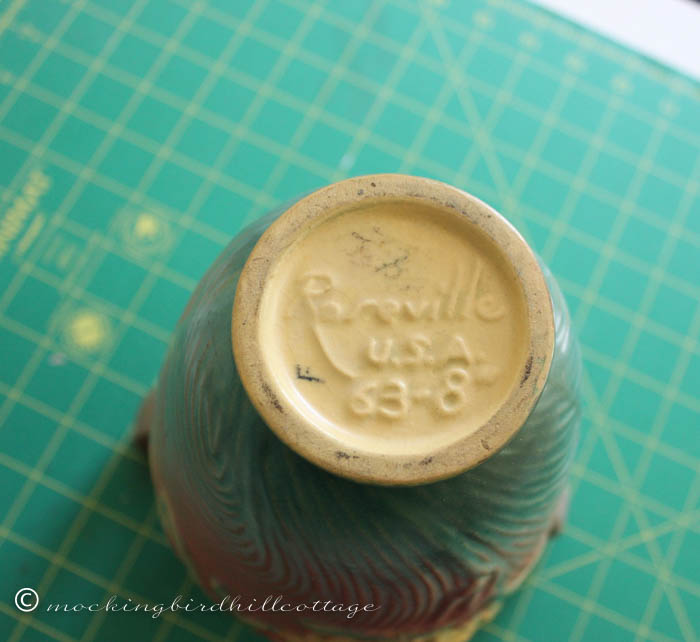
Roseville, U.S.A. 63-8″ – this mark is on the bottom of my pink peony vase.
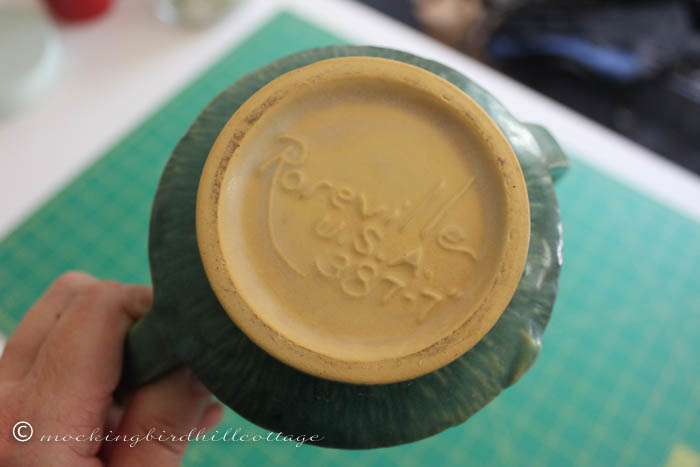
The bottom of one of the Clematis pieces. Note the long tail on the R, the slanted, Art Deco-style letters, and the flourish on the ‘e.’
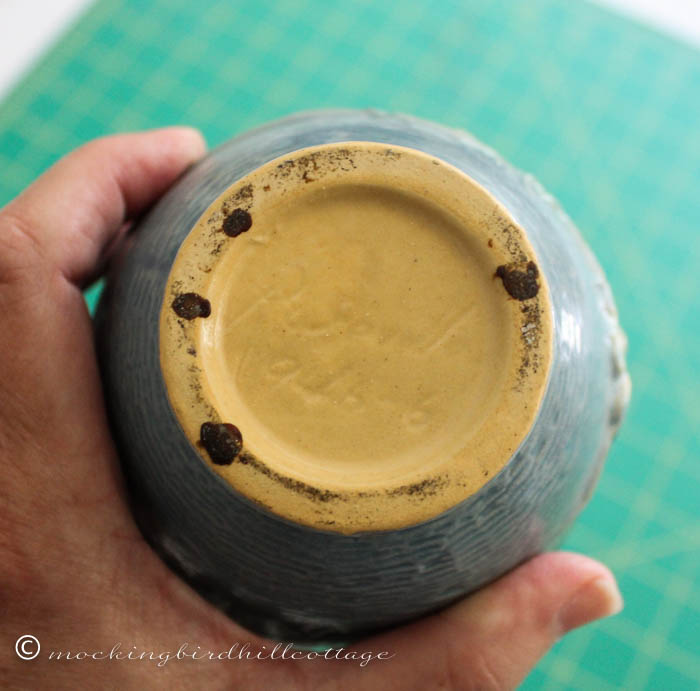
I know this one is hard to see, but it’s an example of an earlier pattern that has “Roseville” and the number, but no U.S.A. This is on the bottom of my Cosmos vase. That’s because this was produced after 1935 but before 1940. However, the long tail on the R and the tail on the ‘e’ remain the same as what you saw on the other pieces. This one is incised, not raised.
Reproductions/Fakes
As to fakes or reproductions: there is quite a bit of information online about determining whether a piece is a reproduction. After collecting for a number of years, I can usually tell just by eyeing a piece. I do have an example of a reproduction to share with you. When Sonja sent me a few pieces of Roseville several years ago, she included one that was questionable. She suspected it was a reproduction. Here it is:
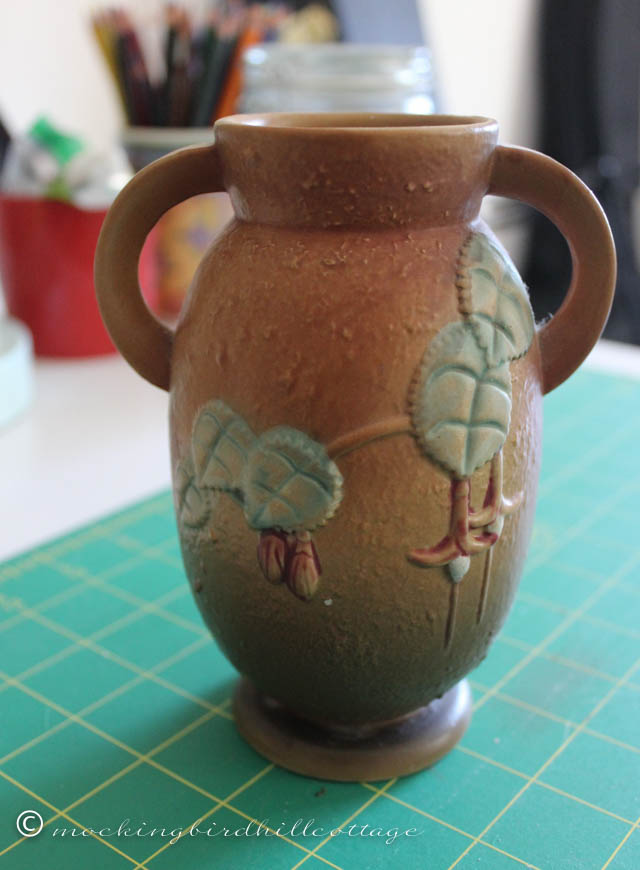
This is a reproduction of the Fuschia pattern. There are a couple of things that I see immediately: the glaze on the front and the back has a bit too much variation in color. The other side of this is a darker shade of brown. When I hold it, it doesn’t have the weight and heft of a Roseville piece. It’s much lighter. Roseville was made from the rich clay found in Ohio.
This is, by the way, a much better reproduction than many I’ve seen. Let’s look at the mark.
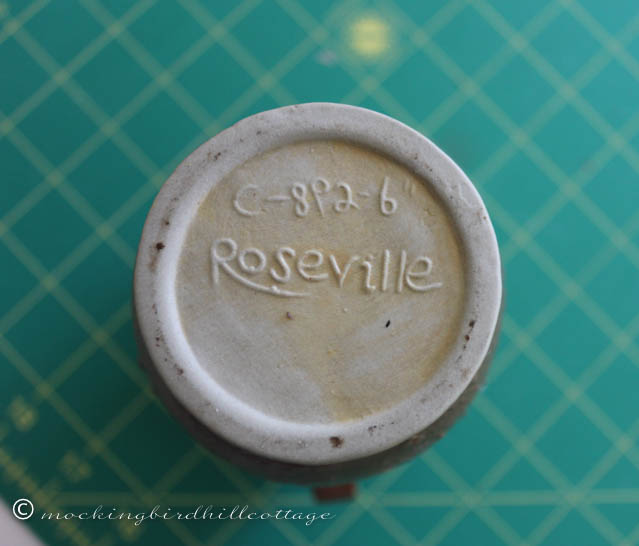
There have always been fakes or reproductions of certain pottery lines. They are most often made in other countries and imported to the United States. At some point, U.S. Customs got fed up and ruled that U.S.A. could no longer be part of the mark on these pieces. There are fakes that do use U.S.A., but not of recent vintage.
This one uses a number that is highly questionable. Why? The ‘C’ isn’t part of a real Roseville mark. Maybe it stands for ‘copy’ or ‘China’? There is a mark for the corresponding Fuchsia piece in my reference book: 892-6″. But this mark flips the ‘9.’ As for the lettering, it’s an entirely different style than that used by Roseville. Reminiscent of the style, but quite different.
It’s a nice little vase, but it’s not Roseville.
You have to be careful when searching on eBay or Etsy. Most reputable dealers will list pieces as reproductions, but not everyone does. Some sellers are simply dishonest. Some honestly don’t know that it’s a reproduction. Some sellers will say they think it’s a reproduction, but aren’t sure. As you look and study, you’ll begin to develop an eye for that sort of thing.
I searched for some Roseville on Etsy yesterday and it seems to be more realistically priced at the moment than the Roseville on eBay. If you buy on Etsy, you pay the price listed. If you use eBay, depending on the listing, you get the thrill of bidding. It’s up to you!
I hope this helps, my friends. I’ll be sure to keep you updated.
We’ll close with some real flowers:
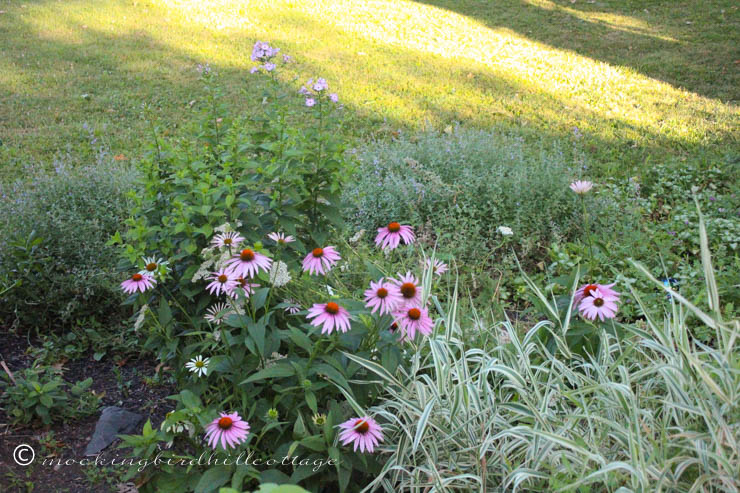
Happy Sunday.

